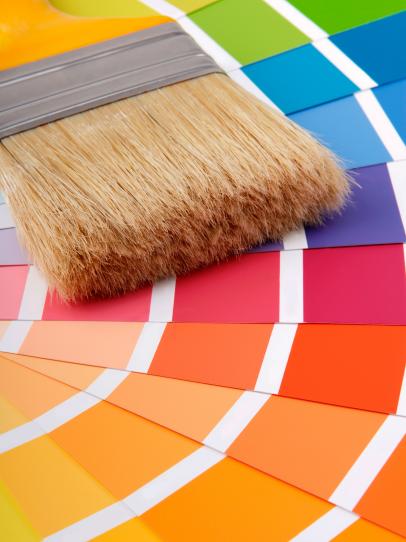Basic Tips for Kitchen Remodeling
Kitchens come in all shapes and sizes, which accounts for a lot of their challenge and a lot of their appeal. The same cabinets, appliances, and surfacing materials can look entirely different in someone else's home than in yours. Stock cabinets can be given a unique look with virtually unlimited specialty finishes and a change of hardware. If your budget can accommodate custom cabinets, your choices are even greater. Countertop materials already come in a great array of choices, but they can be customized even further with special routing or inset bands of another color or material. The same goes for flooring, walls, and in-kitchen dining furniture. So even if your kitchen is small and ordinary, it's not hopeless!
You can transform it into a remarkable space unlike anybody else's. Manufacturers and designers have seen it all, and the end result is that you can have all the amenities you want and need, even in a tiny kitchen. Savvy, space-saving products are available for the owner of the apartment-size condo, co-op, or townhouse kitchen. You'll find that convenience doesn't have to come only in the large economy size.
To create a distinctive space, your first move is to look at your kitchen with an eye to what might serve as a focal point. A large window, alcove, or long wall can be the start. Take advantage of a bank of beautiful windows with an eye-catching counter that runs the length of the window wall. If you love to entertain and are lucky enough to have ample space, consider setting your room up to include two back-to-back kitchens; one with a full-size range, a fridge, ovens, and a sink, and the other with an ice-maker, a wine chiller, a second sink, a mini-fridge, and a microwave, plus an abundance of storage. Pretty much anything you dream up can be executed with the help of a talented design team. It's up to you!
Whether your space is large or small, and whether the end result you want is pretty or pretty wild, you'll do best if you stick close to the following basic recommendations.
Try to keep the straight-line distance between the sink, fridge, and cooktop between 12 and 23 feet.
Position the sink between the other two appliances, since it's used most often. (The sink's location may depend on pre-existing plumbing lines.)
Allow for 36 inches of counterspace to the right and 30 inches to the left of the range and sink if at all possible; if not, allow a minimum of 24 inches and 18 inches.
It's tempting to place a tall fridge and built-in wall oven next to each other, but try not to; each needs its own landing space on both sides of the appliance for safety.
Try to include a minimum of 10 linear feet of both base cabinets and upper cabinets.
Use pull-out drawers rather than reach-in, conventional cabinets for greatest convenience. If you're retro-fitting existing cabinets, have pull-out trays installed.
Consider barrier-free design and products. They make life easier for children, pregnant women, and seniors as well as individuals with disabilities. They'll also add to the longevity of your kitchen.
The biggest factor influencing what type of kitchen you come up with will be the shape of the room itself. In the next section, we will explore some kitchen-shape considerations.
Like all things that are built, if you get the foundation correct then the finishing items usually go into the main system fairly smoothly. So it follows that if you plan your kitchen correctly and methodically then the process should be relatively straight forward, however if you start with the finished idea then that may not be at all practical.
To plan a kitchen we need to start with establishing the parameters within which we have to work. This includes the actual space, the uses of that space and the budget.

There are four stages to planning a kitchen:
Defining the space, which includes either measuring up, and noting the position of the existing services, windows and doors of planning from the start with the architect on how you want the space laid out.
Designing the room's layout to get the appliances, work tops and cupboards where you want them.
Confirming that layout and the services that are needed.(This includes lighting).
Confirming the finishes that you require for the bench tops, the exterior of the cabinetry and the interior of the cabinetry, the flooring, the walls, ceiling and window treatments

The following is intended to help you with the actual planning, but they are only suggestions and will not be practical in all situations, you will often have to compromise. The golden rule is - keep it simple - and remember that the kitchen is one of the main selling points for a house.
For years now kitchen designers have used a simplistic method of a triangle to connect the three main work spaces within a kitchen.
The main working zones in the kitchen are generally recognized as being - food preparation, cooking and serving, and finally washing up. Each activity zone needs to include the work top(s) and appliances required for that activity, also the zone will require the storage space for the utensils, ingredients etc. required for it.
In addition to the three zones, it is important to arrange the appliances and work tops in the correct order i.e. work top - appliance - work top. A work triangle is formed between the three zones.
For the greatest efficiency the total length of the three sides of the triangle should be between 3600mm and 6600mm, and as far as possible, the work triangle should be uninterrupted by through traffic.
The main working zones in the kitchen are generally recognized as being - food preparation, cooking and serving, and finally washing up.

Each activity zone needs to include the work top(s) and appliances required for that activity, also the zone will require the storage space for the utensils, ingredients etc. required for it.
In addition to the three zones, it is important to arrange the appliances and work tops in the correct order i.e. work top - appliance - work top.
A work triangle is formed between the three zones (as shown in the diagrams below). For the greatest efficiency the total length of the three sides of the triangle should be between 3600mm and 6600mm, and as far as possible, the work triangle should be uninterrupted by through traffic.
1. Corridor Kitchen Layout - Galley Kitchen Layout

The galley kitchen name came from the ship's galley - a space of very small porportions. This type of kitchen is common in modern apartments where space is limited and is often used in an open plan room with one side against a wall and the other as a long kitchen island essentially.
In long narrow kitchen spaces with doors or openings at each end, the best design solution is to have two rows of kitchen cabinetry housing the appliances and providing storage and work tops.
There should be a minimum space allowance of 1200mm between the cabinetry to allow for a safe passage through and the ability to open and shut cupboards and load dishwashers etc. Some spaces don't allow for this minimum luxury of space between the cabinetry, so in this case, place all opening appliances and cabinetry along one side.
2. L-shaped Kitchen Layout
This is often the best solution where the kitchen can fit into a corner.

3. U-shaped Kitchen Layout
This layout is convenient as all working areas are within easy reach. It may be the only choice for small rooms although it can also be used with effect where a kitchen area needs to be fitted at one end of a larger room. Try to allow for 1200mm between the parallel sides of the U.

4. Kitchen Island Layout
Often thought of as a luxury, the island layout needs a fairly large room, however in such a room, it does reduce the amount of walking you need to do. Try to allow for 1200mm between the island and any other cupboard/obstruction etc. Although the design shown has the cooking hob on the island, the island could be used for the food preparation area. Remember that services will need to be taken to the island.



